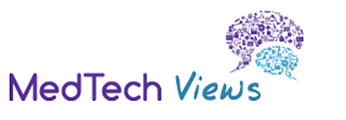
How can companies manage reputational risks in a changing world?

From fraud and cybercrime to compliance and data protection, life sciences firms must monitor risks to avoid being blindsided – here are 5 steps to better risk management
Some of the biggest threats to companies’ reputations have been with us for a long time: fraud, misleading information, and compliance challenges arising from interactions with healthcare professionals and other decision makers. But there are new risks too – as well as new digital tools to help identify emerging problems which have the potential to impact the business.
These were among the vital issues addressed at the Healthcare Ethics & Compliance Conference (HETHICO) in Brussels this month. The conference brings together senior compliance professionals, in-house lawyers and other industry leaders to take the temperature of the challenges facing the medical technology and pharmaceutical sectors today.
Integrity and trust are at the core of life sciences businesses. But while trust is a hard-won commodity, it is easily lost. That’s why we were pleased to take part in a panel discussed entitled Beyond the Headlines – Managing Reputational Risks which explored how companies can identify and manage risks in an increasingly interconnected environment*.
We covered a range of topics, notably monitoring approaches, lessons learned, risk management initiatives and the role of digital. Of these, the ones that continue to generate most interest were new risks emerging from the digital world, and the ongoing need to develop a risk culture.
New risks in a digital world
As compliance leaders, our role is to help businesses understand how to manage these risks – including new and evolving threats. One of the challenges we face arises from how information moves in the modern digital landscape.
The ways in which our organisations are perceived by patients, medical professionals, regulators and authorities can be shaped by online conversations. This creates vulnerabilities, especially in an era of unbridled misinformation and disinformation. The former (misinformation) refers to false or misleading information, whereas the latter (disinformation) is deliberately circulated with malicious intent. Both can be enormously damaging to the reputation of a product, a product class, an organisation or an entire sector.
One thing is certain: we cannot manage risks we don’t monitor. In the absence of good intelligence, the risk of being blindsided by a rapidly emerging reputational issue is elevated. It’s time for compliance professionals to do more on this front. Our colleagues in business teams perform social listening – observing online conversations – to understand perceptions of products, but organisations are less inclined to consistently track reputational risks.
While artificial intelligence (AI) can supercharge the spread of misinformation via algorithms, AI tools also have the potential to enhance our monitoring capabilities – supplementing on-the-ground intelligence gathering. AI may be part of the problem, but it is also the solution, paving the way for greater automation.
Developing a risk culture
Technology will shape the future of corporate reputations. However, we believe that developing a strong risk culture is fundamental to everything we do. Here, trade associations have a role to play in setting standards and codes of practice across the sector. Of course, the reputation of our industry depends on all companies committing to and applying the highest standards in everything they do.
In this fast-moving environment, it can be challenging to know where to begin. However, by developing a strong culture, raising internal awareness of emerging risks, and embracing new tools, companies can improve their capacity to respond. Here are some of the first steps to better preparation for reputational risks in the life sciences.
5 steps to managing reputational risks:
- Embed industry Codes of Practice into daily behaviours by including all leaders, not just policies
- Have direct engagement and open communication for reputational risk management internally and externally and avoid making unsubstantiated assumptions
- Build a culture of risk awareness and psychological safety to enable transparency and continuous learning
- Collaborate with functions such as finance, communications, and operations to strengthen overall resilience
- Experiment with social listening and use data analytics as key tools for early risk detection and proactive management
Life sciences companies continue to work through a wide range of challenges, new and old. Our best chance of responding is to collaborate in compliant ways to understand the new reputational risks we face – and find ways to solve them together. The HETHICO Conference provided a valuable opportunity to take stock and plan for the future.
*The Beyond the Headlines panel at the HETHICO conference featured Myrto Lee, Managing Director & Partner at BCG; Tjerk Schlüfter (Chief Compliance Officer, Fresenius); and Meredith Kennedy (Head of Compliance – Europe North & South, Roche).
The authors acknowledge the contributions of Ramon Bravo and Franziska Spitzauer to this article.












